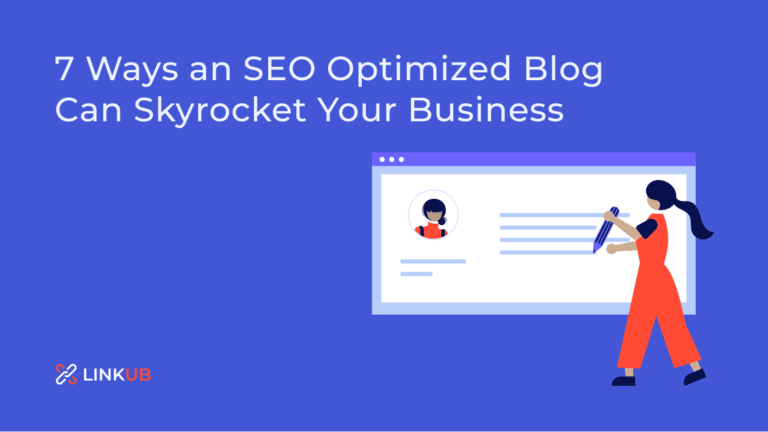Link Building Outreach: 8 Tips To Avoid the Spam Folder
Link building is not hard. But what it is is tedious, time-consuming, and sometimes borderline frustrating. On average, a “good” reply rate for a link building email outreach campaign is only 10%. You also need to keep in mind that this includes negative replies. So in reality, the success rate for link-building emails is even lower.
It doesn’t help that a lot of bloggers, editors, and website owners view these emails as spam and sometimes even give you a huge jab by manually reporting your pitch as spam.
Also, due to the sheer volume of link outreach emails you need to send, they sometimes land in people’s spam folders right off the bat.
In today’s article, we’ll be taking a look at some of the tips to stay out of people’s spam folders and boost those open and reply rates at least a little bit. I have been building links on a daily basis for a little bit over a year now, so I know the pains of losing your pitches to spam filters all too well.
Tip #1 – First off, ditch the default Gmail account
I’m going to start with things you can do before launching your outreach campaigns. The actual email address that you’re sending emails from is almost as important as the pitches themselves.
Never use the default “@gmail.com” account. Most of your cold emails will land in spam. If you’re working for a company, chances are you will already have access to a custom domain.
If you’re planning to build backlinks for your own website, it is well worth investing in a custom email domain. It serves two purposes: not only will your emails look more professional, but their actual deliverability will also be much higher as well.
Another thing you need to do with your email domain is set up DMARC, DKIM, and SPF. All of these things deserve articles of their own, but if I was to sum up what they do, verify your emails and tell email servers that you’re legit rather than another spammer.

Tip #2 – Know who you’re pitching
Another common reason why link-building emails get marked as spam is because they’re sent to the wrong person. So, when you’re preparing your prospect list, it’s extremely important to pick out the right employees.
Don’t bother CEOs, account managers, and backend engineers – they will never reply. Some of the more relevant positions who might actually be responsible for the blog and building links in different companies are:
- Content marketers;
- Marketing managers;
- SEOs;
- Partnership and strategic alliances managers;
- Editors and webmasters;
- Website designer;
- Article authors.
If you can’t find the email address of the most relevant employee, you can try pitching somebody else from the team, possibly asking them to connect you with the right department.
However, your chances of getting a positive response are always higher if you message one of these employees.
Tip #3 – Always verify emails
You always want to verify an email before sending your pitch there. This much is obvious, of course, you want to get replies. But there is one (arguably more important) reason why you should only be pitching 100% verified email addresses.
When you send an email to an unverified address and it turns out to be non-existent, what happens is known as a hard bounce. Besides being a waste of time, bounces are very unhealthy for your email address because they serve as an indicator to email service providers that you’re potentially guessing emails.
This is considered a spammy tactic and will have an impact on your future campaigns. In fact, it may cause your new emails to get flagged as spam, even if they are sent to verified addresses.
A “healthy” bounce rate is considered to be 2% or less. It is impossible to completely eliminate bounces because sometimes they happen because of things outside of your control (like the recipient’s inbox being full), but it’s pretty easy to get that number down by verifying your prospects’ emails before reaching out.
If you can’t find a verified personal email address of anybody at the company, don’t try your luck pitching a bunch of unverified emails. Try your luck with the generic “support” or “contact@domain.com” instead – most sites have these down in their footers.
Tip #4 – The subject line is half the job
Your email’s subject line might be your one and only chance to get someone to open your email. So, you really need to make it count.
How do you do it? It’s a little bit tricky. It needs to let your prospect know exactly what they will find after they click on your email. But, if editors are already sick and tired of link-building pitches, how do you encourage them to answer yours?
Creativity. It’s easier said than done. Most link builders include some variation of the word “collaboration” in the subject line. And it’s perfectly fine – I do it myself. However, I can’t say that it’s even a little bit creative.
This is a subject line of a guest posting pitch I received recently. I really like that one – and even though we don’t actually accept guest posts on our blog, I still answered the email to discuss some other potential collaboration opportunities.
A bit of humor and self-awareness never hurt anybody, just don’t go overboard with it.
Tip #5 – Take it easy with follow-ups
I’ve had some people follow up with me twice every single day, for almost a week straight. Seriously. Don’t be that person.
It’s completely fine to send a follow-up email just in case your original pitch got lost in the shuffle, or your prospect simply forgot to reply and got distracted by more important tasks.
But please, be respectful and mindful of their time. Don’t send it on the next day – you will just come across as pushy. Wait 3-5 business days before sending your follow-up. And don’t send more than one. There are zero reasons to do so: if the person has ignored two of your emails, chances are that they saw it and simply weren’t interested.
You will simply annoy any more emails and might even get yourself manually flagged as spam. And that’s really bad. Unlike triggered emails, follow-ups to link pitches rarely actually help, so it’s best to keep it light.

Tip #6 – Remember about the value proposition
People don’t usually give links away for free. I’ve had situations where someone was just happy to link to our article because it’s really good content, but that’s an exception rather than the norm.
In order to get someone to reply to your pitch, you need to give them a good enough reason to reply. What’s in it for them? If they will agree to link to your content, how will they benefit?
Some bloggers charge “editorial feels” for inserting links. It’s up to you whether you want to pay them or not, but generally, it’s frowned upon. It’s also against Google’s guidelines.
An example of a solid value proposition would be an indirect backlink in return. For example, from another website you manage, or from a guest post that you’re preparing for another website.
Some people will request a reciprocal backlink – I would recommend you to stay away from these. Google’s algorithm is very good at picking these up.
And while you won’t receive a penalty for reciprocal backlinks, what will happen is they will get completely devalued by Google. This means that they will not be passing any “SEO juice”, making them completely pointless to build in the first place.
Tip #7 – Run a spam word check
Before sending out your pitches, running them through a spam checker is a great idea. Ideally, you shouldn’t have any words associated with spam in the text at all.
There are plenty of spam checkers available on the Internet, and it only takes a few seconds to run. However, ridding your copy of any spam words will have a noticeable impact on your overall deliverability and the way you sound.

Tip #8 – Be human 🙋♂️
This is really simple advice, but it’s also (in my opinion) very important. When doing email outreach, it’s easy to forget that on the receiving end of each of the hundreds of your emails there is a living, breathing person, just like you.
Be polite and respectful – but with link building, there’s rarely any need to be super formal. Just be yourself, and talk to people like they’re sitting at a coffee table with you.
A little bit of character and quirkiness never hurt anybody, making your conversations much more enjoyable.

Further reading





![Content Marketing: Tactics and Trends [2024]](https://linkub.io/wp-content/uploads/2022/06/Guest-post-smart-tactics-and-current-trends-content-marketing-2022-768x432.png)
